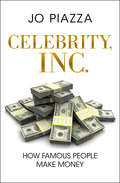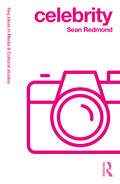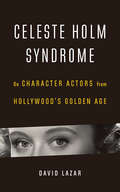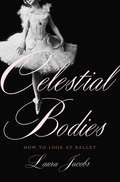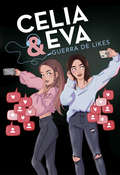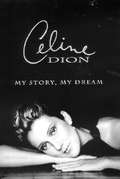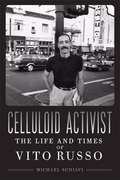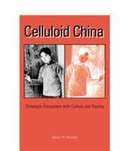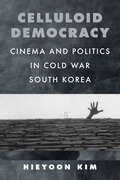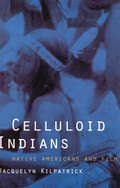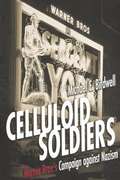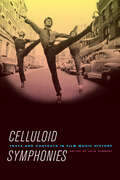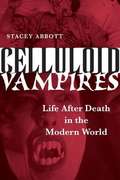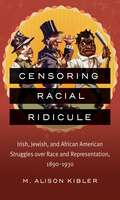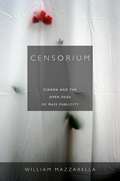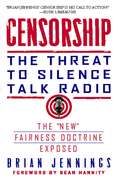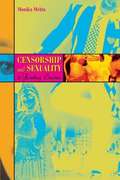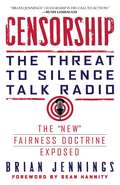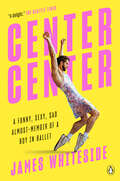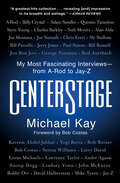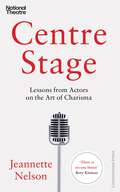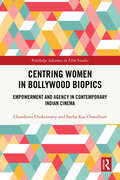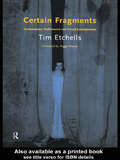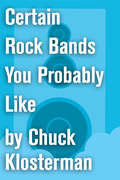- Table View
- List View
Celebrity, Inc.: How Famous People Make Money
by Jo PiazzaFrom $10,000 tweets to making money in the afterlife, a recovering gossip columnist explores the business lessons that power the Hollywood Industrial Complex Why do celebrities get paid so much more than regular people to do a job that seems to afford them the same amount of leisure time as most retirees? What do Bush-era economics have to do with the rise of Kim Kardashian? How do the laws of supply and demand explain why the stars of Teen Mom are on the cover of Us Weekly? And how was the sale of Brad Pitt and Angelina Jolie&’s baby pictures a little like a street drug deal? After a decade spent toiling as an entertainment journalist and gossip columnist, Jo Piazza asks the hard questions about the business behind celebrity. Make no mistake: Celebrity is an industry. Never in the course of human history has the market for celebrities been as saturated as it is today. Nearly every day most Americans will consume something a celebrity is selling—a fragrance, a sneaker, a song, a movie, a show, a tweet, or a photo in a magazine. With the benefits of Piazza&’s unique access to the celebrity market, Celebrity, Inc. explains in detail what generates cash for the industry and what drains value faster than a starlet downs champagne—in twelve fascinating case studies that tackle celebrities the way industry analysts would dissect any consumer brand.
Celebrity: New Directions In Celebrity Culture (Key Ideas in Media & Cultural Studies)
by Sean RedmondCelebrity introduces the key terms and concepts, dilemmas and issues that are central to the study and critical understanding of celebrity. Drawing on two dynamic models from two different modes of enquiry – the circuit of celebrity culture and the circuit of celebrity affect – this book explores the multi-layered, multi-faceted contexts and concepts that sit within and surround the study of celebrity. Through building a critical story about celebrity, Sean Redmond discusses key topics such as identity and representation; the celebrity body; the consumption of celebrity and celebrity culture; and the sensory connection between fans and celebrities, gender, activism, gossip and toxicity. Including case studies on Miley Cyrus, David Bowie, Scarlett Johansson and Kate Winslet, Celebrity is a dynamic and topical volume ideal for students and academics in celebrity and cultural studies.
Celeste Holm Syndrome: On Character Actors from Hollywood's Golden Age
by David LazarIn this essay collection David Lazar looks to our intimate relationships with characters, both well-known and lesser known, from Hollywood&’s Golden Age. Veering through considerations of melancholy and wit, sexuality and gender, and the surrealism of comedies of the self in an uncanny world, mixed with his own autobiographical reflections of cinephilia, Lazar creates an alluring hybrid of essay forms as he moves through the movies in his mind. Character actors from the classical era of the 1930s through the 1950s including Thelma Ritter, Oscar Levant, Martin Balsam, Nina Foch, Elizabeth Wilson, Eric Blore, Edward Everett Horton, and the eponymous Celeste Holm all make appearances in these considerations of how essential character actors were, and remain, to cinema.
Celestial Bodies: How to Look at Ballet
by Laura JacobsA distinguished dance critic offers an enchanting introduction to the art of balletAs much as we may enjoy Swan Lake or The Nutcracker, for many of us ballet is a foreign language. It communicates through movement, not words, and its history lies almost entirely abroad--in Russia, Italy, and France. In Celestial Bodies, dance critic Laura Jacobs makes the foreign familiar, providing a lively, poetic, and uniquely accessible introduction to the world of classical dance. Combining history, interviews with dancers, technical definitions, descriptions of performances, and personal stories, Jacobs offers an intimate and passionate guide to watching ballet and understanding the central elements of choreography.Beautifully written and elegantly illustrated with original drawings, Celestial Bodies is essential reading for all lovers of this magnificent art form.
Celia y Eva: Guerra de Likes
by Celia Dail Eva IbáñezEl libro de las musical.ly más potentes del momento. Una novela repleta de amor, amistad y un pequeño gran misterio por resolver. ¡Ah! Y por supuesto, todo ello envuelto con mucha música. <P><P>Eva y Celia no se conocen, pero tienen sueños muy parecidos. A las dos les encanta la música, la moda y son muy activas en redes sociales. <P>Aunque sus canales no terminan de despegar del todo, se imaginan compartiendo sus canciones, sus gustos y sus inquietudes con miles de seguidores. Un día, sus destinos y sus voces se cruzan por casualidad en una parada de autobús. La cámara de un móvil graba el momento y lo que tanto tiempo han querido se convierte en realidad. <P>Amistad, seguidores, popularidad... ¡Lo tienen todo! <P>Pero justo en lo mejor del sueño, dos chicos misteriosos empiezan a hacerles sombra. ¿Quiénes son, y qué quieren esos dos imitadores que amenazan con arrebatarles seguidores? <P>A Eva y Celia les ha costado mucho llegar donde están, y están dispuestas a defenderlo de quien sea y como sea... ... aunque para ello tengan que librar una auténtica guerra de likes.
Celine Dion: My Story, My Dream
by Celine Dion Bruce Benderson Georges-Hébert GermainNow, in her own words, the most dynamic vocal talent of our time--the international singing sensation whose recordings have sold millions, and whose performances electrify the world's great arenas--gives us her poignant, intimate, and inspiring life story . . . from the heart. She was born into a working-class Canadian family, the youngest of fourteen children. She gave her first performance standing on a kitchen table and dreamed of becoming a superstar. Few in her field can rival the phenomenal God-given abilities of Celine Dion. Fewer still have experienced the love, sorrow, accomplishment, and ecstasy that have shaped her remarkable life and carried her to the pinnacle of the entertainment world. "In Celine Dion: My Story, My Dream Celine takes us backstage, on the road, into the recording studio, and behind the scenes to reveal the hard work that creates the magic. But her book, much more than a chronicle of early breakthroughs and professional high-water marks, of unforgettable encounters with the luminaries and legends of show business is, first and foremost, a story of love. This talented and beautiful woman who has moved us with her singing now moves us with her words as she tells of growing up in a large, close-knit household fortified in its daily struggles by powerful bonds of heartfelt affection and the family tragedies their shared love enabled them to overcome. Here, also, Celine recounts warmly and intimately the storybook romance that remains her most enduring passion and greatest joy: Celine's marriage to René Angélil, her manager and soul mate. She tells of the devastating pain they both experienced when a doctor informed them that René had cancer, and how fighting the disease together helped strengthen their relationship. And she shares her joy, anxiety, and breathless anticipation of the impending fulfillment of their most cherished dream: parenthood. A true story of courage, perseverance, dedication, and devotion--told with the wide-eyed honesty of someone who, though she has basked in the glowing adoration of millions of fans, has never lost touch with her working-class roots--Celine Dion: My Story, My Dream is for anyone who has ever wondered about the real person behind the magnificent voice. Touching and funny, fascinating and uplifting, it is an exquisitely detailed portrait of a remarkable woman who has never backed away from a challenge ... even the most daunting challenges of the heart. CELINE DION is one of the world's most popular and well-known singers today. When she sang at the opening ceremonies of the Olympic Games in Atlanta, her voice reached 3.5 billion people worldwide. Her albums are instant bestsellers upon release. She has sold more than 60 million copies of her English-language recordings, millions more of her French recordings, and 18 million copies of "My Heart Will Go On," the theme from Titanic. Celine is admired and loved by fans around the world, and her concerts fill stadiums, whatever the size. With 115 separate music awards to her name, she is a living legend.
Celluloid Activist: The Life and Times of Vito Russo
by Michael SchiaviCelluloid Activist is the biography of gay-rights giant Vito Russo, the man who wrote The Celluloid Closet: Homosexuality in the Movies, commonly regarded as the foundational text of gay and lesbian film studies, and one of the first to be widely read. But Russo was much more than a pioneering journalist and author. A founding member of the Gay and Lesbian Alliance Against Defamation (GLAAD) and cofounder of the AIDS Coalition to Unleash Power (ACT UP), Russo lived at the center of the most important gay cultural turning points in the 1960s, 1970s, and 1980s. His life as a cultural Zelig intersects a crucial period of social change, and in some ways his story becomes the story of a developing gay revolution in America. A frequent participant at "zaps" and an organizer of Gay Activists Alliance (GAA) cabarets and dances-which gave the New York gay and lesbian community its first social alternative to Mafia-owned bars-Russo made his most enduring contribution to the GAA with his marshaling of "Movie Nights," the forerunners to his worldwide Celluloid Closet lecture tours that gave gay audiences their first community forum for the dissection of gay imagery in mainstream film. Biographer Michael Schiavi unravels Vito Russo's fascinating life story, from his childhood in East Harlem to his own heartbreaking experiences with HIV/AIDS. Drawing on archival materials, unpublished letters and journals, and more than two hundred interviews, including conversations with a range of Russo's friends and family from brother Charlie Russo to comedian Lily Tomlin to pioneering activist and playwright Larry Kramer,Celluloid Activist provides an unprecedented portrait of a man who defined gay-rights and AIDS activism.
Celluloid China: Cinematic Encounters with Culture and Society
by Harry H. KuoshuCelluloid China: Cinematic Encounters with Culture and Society by Harry H. Kuoshu is a lucid introduction to the cinema of mainland China from the early 1930s to the early 1990s. <P><P> Emphasizing both film contexts and film texts, this study invites film scholars and students to a broad cinematic analysis that includes investigations of cultural, cross-cultural, intellectual, social, ethnic, and political issues. Such a holistic evaluation allows for a better understanding of both the genesis of a special kind of film art from the People’s Republic of China and the culture exemplified in those films. <P> The fifteen films include: Two Stage Sisters; Hibiscus Town; Farewell My Concubine; Street Angel; Three Women; Human, Woman, Demon; Judou; Girl from Hunan; Sacrificed Youth; Horse Thief; Yellow Earth; Old Well; Red Sorghum; Black Cannon Incident; and Good Morning, Beijing. <P> Discussions of each film have an introduction, passages from the director’s own notes whenever available, and a scholarly article. Discussion questions are found in an appendix. Within its complete bibliography, the book also features a suggested reading list for Chinese film classes.
Celluloid Democracy: Cinema and Politics in Cold War South Korea
by Hieyoon KimA free ebook version of this title is available through Luminos, University of California Press's Open Access publishing program. Visit www.luminosoa.org to learn more.Celluloid Democracy tells the story of the Korean filmmakers, distributors, and exhibitors who reshaped cinema in radically empowering ways through the decades of authoritarian rule that followed Korea's liberation from Japanese occupation. Employing tactics that ranged from representing the dispossessed on the screen to redistributing state-controlled resources through bootlegging, these film workers explored ideas and practices that simultaneously challenged repressive rule and pushed the limits of the cinematic medium. Drawing on archival research, film analysis, and interviews, Hieyoon Kim examines how their work foregrounds a utopian vision of democracy where the ruled represent themselves and access resources free from state suppression. The first book to offer a history of film activism in post-1945 South Korea, Celluloid Democracy shows how Korean film workers during the Cold War reclaimed cinema as an ecology in which democratic discourses and practices could flourish.
Celluloid Indians: Native Americans and Film
by Neva Jacquelyn KilpatrickNative American characters have been the most malleable of metaphors for filmmakers. The likeable Doc of Stagecoach (1939) had audiences on the edge of their seats with dire warnings about “that old butcher, Geronimo.” Old Lodgeskins of Little Big Man (1970) had viewers crying out against the demise of the noble, wise chief and his kind and simple people. In 1995 Disney created a beautiful, peace-loving ecologist and called her Pocahontas. Only occasionally have Native Americans been portrayed as complex, modern characters in films like Smoke Signals. Celluloid Indians is an accessible, insightful overview of Native American representation in film over the past century. Beginning with the birth of the movie industry, Jacquelyn Kilpatrick carefully traces changes in the cinematic depictions of Native peoples and identifies cultural and historical reasons for those changes. In the late twentieth century, Native Americans have been increasingly involved with writing and directing movies about themselves, and Kilpatrick places appropriate emphasis on the impact that Native American screenwriters and filmmakers have had on the industry. Celluloid Indians concludes with a valuable, in-depth look at influential and innovative Native Americans in today’s film industry.
Celluloid Soldiers: Warner Bros.'s Campaign Against Nazism
by Michael E. Birdwell<p>During the 1930s many Americans avoided thinking about war erupting in Europe, believing it of little relevance to their own lives. Yet, the Warner Bros. film studio embarked on a virtual crusade to alert Americans to the growing menace of Nazism. <p>Polish-Jewish immigrants Harry and Jack Warner risked both reputation and fortune to inform the American public of the insidious threat Hitler's regime posed throughout the world. Through a score of films produced during the 1930s and early 1940s-including the pivotal Sergeant York-the Warner Bros. studio marshaled its forces to influence the American conscience and push toward intervention in World War II. <p>Celluloid Soldiers offers a compelling historical look at Warner Bros.'s efforts as the only major studio to promote anti-Nazi activity before the outbreak of the Second World War.</p>
Celluloid Symphonies: Texts and Contexts in Film Music History
by Julie HubbertCelluloid Symphonies is a unique sourcebook of writings on music for film, bringing together fifty-three critical documents, many previously inaccessible. It includes essays by those who created the music—Max Steiner, Erich Korngold, Jerry Goldsmith, Elmer Bernstein and Howard Shore—and outlines the major trends, aesthetic choices, technological innovations, and commercial pressures that have shaped the relationship between music and film from 1896 to the present. Julie Hubbert’s introductory essays offer a stimulating overview of film history as well as critical context for the close study of these primary documents. In identifying documents that form a written and aesthetic history for film music, Celluloid Symphonies provides an astonishing resource for both film and music scholars and for students.
Celluloid Vampires
by Stacey AbbottIn 1896, French magician and filmmaker George Méliès brought forth the first celluloid vampire in his film Le manoir du diable. The vampire continues to be one of film's most popular gothic monsters and in fact, today more people become acquainted with the vampire through film than through literature, such as Bram Stoker's classic Dracula. How has this long legacy of celluloid vampires affected our understanding of vampire mythology? And how has the vampire morphed from its folkloric and literary origins? In this entertaining and absorbing work, Stacey Abbott challenges the conventional interpretation of vampire mythology and argues that the medium of film has completely reinvented the vampire archetype. Rather than representing the primitive and folkloric, the vampire has come to embody the very experience of modernity. No longer in a cape and coffin, today's vampire resides in major cities, listens to punk music, embraces technology, and adapts to any situation. Sometimes she's even female. With case studies of vampire classics such as Nosferatu, Martin, Blade, and Habit, the author traces the evolution of the American vampire film, arguing that vampires are more than just blood-drinking monsters; they reflect the cultural and social climate of the societies that produce them, especially during times of intense change and modernization. Abbott also explores how independent filmmaking techniques, special effects makeup, and the stunning and ultramodern computer-generated effects of recent films have affected the representation of the vampire in film.
Censoring Racial Ridicule
by M. Alison KiblerA drunken Irish maid slips and falls. A greedy Jewish pawnbroker lures his female employee into prostitution. An African American man leers at a white woman. These and other, similar images appeared widely on stages and screens across America during the early twentieth century. In this provocative study, M. Alison Kibler uncovers, for the first time, powerful and concurrent campaigns by Irish, Jewish and African Americans against racial ridicule in popular culture at the turn of the twentieth century. Censoring Racial Ridicule explores how Irish, Jewish, and African American groups of the era resisted harmful representations in popular culture by lobbying behind the scenes, boycotting particular acts, and staging theater riots. Kibler demonstrates that these groups' tactics evolved and diverged over time, with some continuing to pursue street protest while others sought redress through new censorship laws. Exploring the relationship between free expression, democracy, and equality in America, Kibler shows that the Irish, Jewish, and African American campaigns against racial ridicule are at the roots of contemporary debates over hate speech.
Censorium: Cinema and the Open Edge of Mass Publicity
by William MazzarellaIn the world of globalized media, provocative images trigger culture wars between traditionalists and cosmopolitans, between censors and defenders of free expression. But are images censored because of what they mean, what they do, or what they might become? And must audiences be protected because of what they understand, what they feel, or what they might imagine? At the intersection of anthropology, media studies, and critical theory, Censorium is a pathbreaking analysis of Indian film censorship. The book encompasses two moments of moral panic: the consolidation of the cinema in the 1910s and 1920s, and the global avalanche of images unleashed by liberalization since the early 1990s. Exploring breaks and continuities in film censorship across colonial and postcolonial moments, William Mazzarella argues that the censors' obsessive focus on the unacceptable content of certain images and the unruly behavior of particular audiences displaces a problem that they constantly confront yet cannot directly acknowledge: the volatile relation between mass affect and collective meaning. Grounded in a close analysis of cinema regulation in the world's largest democracy, Censorium ultimately brings light to the elusive foundations of political and cultural sovereignty in mass-mediated societies.
Censorship
by Sean Hannity Brian JenningsFreedom of speech. It is our most cherished privilege as Americans, guaranteed by the First Amendment to the U.S. Constitution since 1791. But our current presidential administration threatens to sharply curtail or silence altogether the freedom of expression that distinguishes America from the average dictatorship. What is under direct attack? Conservative talk radio. During the Reagan administration, conservative talk radio burgeoned when the FCC voted to stop enforcing the Fairness Doctrine, which required all licensed broadcasters to present "balanced" viewpoints on controversial issues. The format was a smash hit, attracting an estimated 50 million listeners weekly. Popular, profitable, outspoken, powerful, influential--it's what the American people wanted, and its success was the Democrats' worst nightmare. Now, the principles underlying the Fairness Doctrine threaten to be reinstated. Under cover of being "fair," they will be used as a means of censorship, allowing government to influence who owns our airwaves and thus controls the content, a mandate with far-reaching implications for all media--indeed, for freedom of speech for all Americans.
Censorship and Sexuality in Bombay Cinema
by Monika MehtaIndia produces an impressive number of films each year in a variety of languages. Here, Monika Mehta breaks new ground by analyzing Hindi films and exploring the censorship of gender and heterosexuality in Bombay cinema. She studies how film censorship on various levels makes the female body and female sexuality pivotal in constructing national identity, not just through the films themselves but also through the heated debates that occur in newspapers and other periodicals. The standard claim is that the state dictates censorship and various prohibitions, but Mehta explores how relationships among the state, the film industry, and the public illuminate censorship's role in identity formation, while also examining how desire, profits, and corruption are generated through the act of censoring. Committed to extending a feminist critique of mass culture in the global south, Mehta situates the story of censorship in a broad social context and traces the intriguing ways in which the heated debates on sexuality in Bombay cinema actually produce the very forms of sexuality they claim to regulate. She imagines afresh the theoretical field of censorship by combining textual analysis, archival research, and qualitative fieldwork. Her analysis reveals how central concepts of film studies, such as stardom, spectacle, genre, and sound, are employed and (re)configured within the ambit of state censorship, thereby expanding the scope of their application and impact.
Censorship: The Threat to Silence Talk Radio
by Sean Hannity Brian Jennings"Talk radio is the American voter." -- Rush Limbaugh Freedom of speech. It is our most cherished privilege as Americans, guaranteed by the First Amendment to the U. S. Constitution since 1791. But at the dawn of a new presidential administration, an epic battle is looming -- a battle for our airwaves that could sharply curtail or silence altogether the freedom of expression that distinguishes America from the average dictatorship. The target of this battle is conservative talk radio. If key Democrats have their way, the principles of the Federal Communications Commission's Fairness Doctrine will once again be enforced and allow government to control the content heard on free radio, a mandate that will have far-reaching implications for all media. During the Reagan administration the FCC voted to stop enforcing the Fairness Doctrine, which required all licensed broadcasters to present "balanced" viewpoints on controversial issues. Conservative talk radio burgeoned, giving rise to the father of conservative talk, Rush Limbaugh, and such hosts as Sean Hannity, Mark Levin, Michael Medved, Neal Boortz, Laura Ingraham, and others. The format was a smash hit -- resonating with listeners from coast to coast and giving a powerful voice to the conservative movement. Soon such programming, attracting an estimated 50 million listeners weekly, dominated the airwaves where liberal talk radio failed. Popular, profitable, outspoken, powerful, influential -- it's what the American people wanted, and its success was the Democrats' worst nightmare. Now, the principles of the Fairness Doctrine threaten to be reinstated -- if not directly, then through back-door tactics involving ownership of stations. Under cover of being "fair," they will prove to be anything but: They will be used as a means of censorship by those with contempt for conservative talk radio. With our current Congress firmly under Democratic control, the future of talk radio -- indeed, freedom of speech for all Americans -- is under direct attack.
Center Center: A Funny, Sexy, Sad Almost-Memoir of a Boy in Ballet
by James Whiteside&“James Whiteside is an electrifying performer, an incredible athlete, and an artist, through and through. To know James is to love him; with Center Center, you are about to fall in love.&” —Jennifer Garner &“A frank examination and celebration of queerness.&”—Good Morning America A daring, joyous, and inspiring memoir-in-essays from the American Ballet Theatre principal dancer-slash-drag queen-slash-pop star who's redefining what it means to be a man in balletThere's a mark on every stage around the world that signifies the center of its depth and width, called "center center." James Whiteside has dreamed of standing on that very mark as a principal dancer with the prestigious American Ballet Theatre ever since he was a twelve-year-old blown away by watching the company's spring gala. The GLAMOUR. The VIRTUOSITY. The RIPPED MEN IN TIGHTS! In this absurd and absurdist collection of essays, Whiteside tells us the story of how he got to be a primo ballerino—stopping along the way to muse about the tragically fated childhood pets who taught him how to feel, reminisce on ill-advised partying at summer dance camps, and imagine fantastical run-ins with Jesus on Grindr. Also in these pages are tales of the two alter egos he created to subvert the strict classical rigor of ballet: JbDubs, an out-and-proud pop musician, and Ühu Betch, an over-the-top drag queen named after Yoohoo chocolate milk. Center Center is an exuberant behind-the-scenes tour of Whiteside&’s triple life, both on- and offstage—a raunchy, curious, and unapologetic celebration of queerness, self-expression, friendship, sex, creativity, and pushing boundaries that will entertain you, shock you*, inspire you, embolden you . . . and maybe even make you cry.*THIS IS NOT A BOOK FOR CHILDREN.
CenterStage: My Most Fascinating Interviews—from A-Rod to Jay-Z
by Michael KayFrom the longtime host of the New York Yankees&’ television broadcasts, ESPN Radio&’s The Michael Kay Show, and YES Network&’s Emmy Award–winning CenterStage comes a selection of his most memorable interviews with the most intriguing personalities in sports and entertainment—ranging from Jay-Z to Mike Tyson to Serena Williams to Adam Sandler to Bon Jovi to Larry David. Emmy Award–winning television announcer and interviewer Michael Kay&’s eighteen years as host of CenterStage have given him access to many remarkable figures in sports and entertainment. Now, this absorbing selection of the best, most revealing—and often surprising—interviews are available in one amazing collection, including some of the behind-the-scenes stories that didn&’t appear on camera. From Kay&’s very first CenterStage interview in 2001 with quarterback Steve Young, the show&’s creators knew they had something special. Kay&’s ability to get celebrities and otherwise private personalities to open up and share candid insights has become his trademark. Among the interviews featured in the book are those with Red Auerbach, Charles Barkley, Mike Tyson, Bobby Orr, Sly Stallone, Jay-Z, Lorne Michaels, Paul Simon, John McEnroe, Rob Reiner, Seth Meyers, Serena Williams, Alan Alda, David Halberstam, Larry David, Bob Costas, Billy Crystal, Lindsey Vonn, Chris Evert, and Quentin Tarantino. For any pop culture fan or sports enthusiast, this prized collection is one to cherish for generations.
Centre Stage: Lessons from Actors on the Art of Charisma
by Jeannette NelsonHow the world’s best actors communicate with gravitas – and how you can, too.‘The theatre stars’ voice guru’ Daily MailActing is all about charisma. Whether you’re an A-list star or an extra, when you’re on stage you need to perform in a way that makes your audience listen.That stage presence is something we can all learn from. Every time you speak up in a meeting, recount an anecdote, or tell a joke, it’s essential to communicate with gravitas.Jeannette Nelson knows a thing or two about gravitas. As Head of Voice at the National Theatre, she has spent three decades working with the world’s leading actors – from Al Pacino to Benedict Cumberbatch to Juliette Binoche – teaching them to speak clearly and move confidently.Now, Nelson pulls back the curtain on the tricks that professional performers use to own the room. Starting with clear speech and good posture, before moving on to the art of rhetoric and overcoming stage fright, she outlines a holistic three-stage method to communicating with authority, authenticity and eloquence. Throughout, she peppers the book with stories of how world-renowned actors learnt to make themselves heard – and how you can, too.The result is a fascinating and eminently practical guide to the art of performance. If all the world’s a stage, then this book will turn you into its lead actor.
Centring Women in Bollywood Biopics: Empowerment and Agency in Contemporary Indian Cinema (Routledge Advances in Film Studies)
by Chandrava Chakravarty Sneha Kar ChaudhuriThis book explores the dramatic rise in popularity of the women’s biopic in contemporary Bollywood, within the context of wider cultural shifts over the past decade.Delving into the societal shifts reflected in the genre, both on and off screen, the book explores the contours of individual agency and the centring of women in Indian cinema. The book offers new insight into women-centric Hindi biopics, a fast-rising genre carving out a tradition of its own, with female directors and actors contributing to this rising postfeminist celebration of women’s agency and individuality. The authors posit that the alternative narratives, created by Bollywood and accepted by mainstream audiences, have become a catalyst to elevate women or female actors to protagonists, without the need to conform to the sexist mores of mainstream Bollywood.This book will be of interest to scholars, researchers and upper-level students in the areas of film studies, media industries, gender and feminism, and South Asian studies.
Certain Fragments: Texts and Writings on Performance
by Tim EtchellsWhat is the relationship between performance and play? Between performance and technology? Between performance and death? Certain Fragments is an extraordinary exploration of what lies at the heart of contemporary theatre. Written by the artistic director of Forced Entertainment, acknowledged to be Britains most brilliant experimental theatre company (Guardian), Certain Fragments investigates the processes of devising performance, the role of writing in an interdisciplinary theatre, and the influence of the city on contemporary art practice. Tim Etchells unique and provocative voice shifts from intimate anecdote to critical analysis and back again. And as in his theatre-making so in his book: with Certain Fragments Etchells disrupts traditional notions of creative, academic, and intellectual work. The book is an exciting and radical fusion of story-telling and criticism. It also makes available, for the first time, four seminal Forced Entertainment texts by Etchells.
Certain Rock Bands You Probably Like
by Chuck KlostermanOriginally collected in Chuck Klosterman IV and now available both as a stand-alone essay and in the collection Chuck Klosterman on Pop, this essay is about underrated and overrated artists.
Cesaria Feels the Beat
by Denise Rosario AduseiIn this powerful and inspiring picture book, a deaf girl stands up for herself and takes off her shoes while dancing at her Carnival performance so she can feel the music through her bare feet.Cesaria is going to perform for the seaside Carnival. She skips past the beach barefoot, dressed in her favorite peacock leotard.But when her dance director tells her she must put on her shoes to go on stage, Cesaria signs, “Peacocks don’t wear shoes!”You see, Cesaria hears the music through the soles of her feet, but no one seems to understand……That is, until all the dancers take off their shoes, and learn to feel the music, just like Cesaria.Cesaria Feels the Beat is a lyrical and heartfelt story about deafness, community, and Carnival.
